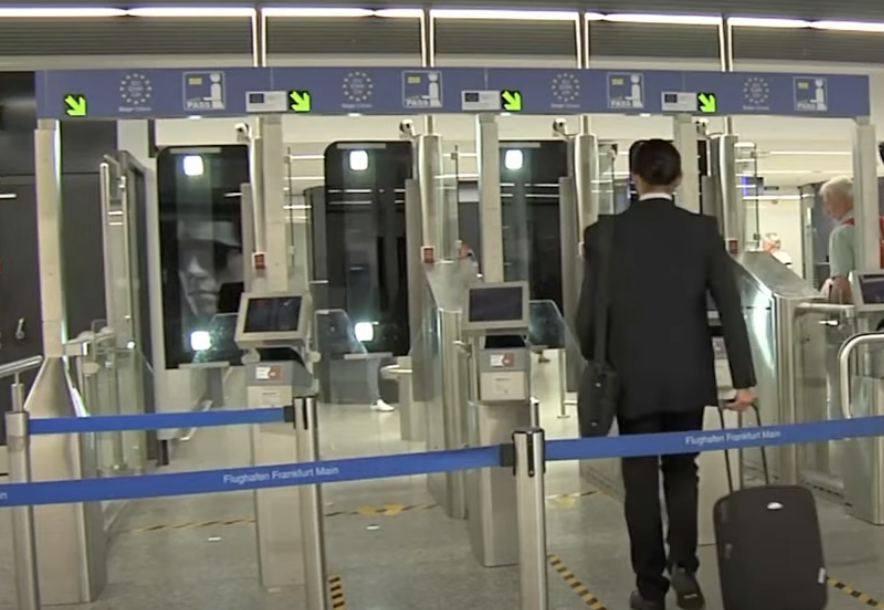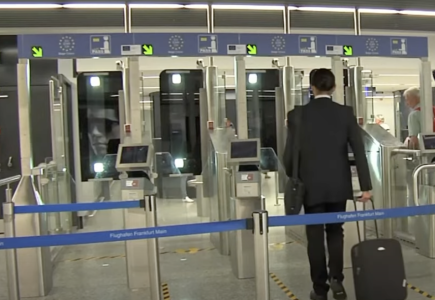

Planning a European holiday has just become a bit more complicated, but don't let that put you off your dream trip to Tuscany or that river cruise down the Rhine.
Europe is rolling out the most significant changes to border controls in decades, and Australian travellers need to be prepared.
The European Union's new Entry/Exit System (EES) will officially launch on 12 October 2025, replacing the familiar ritual of passport stamping with digital biometric registration.
But this is just the first step in a major overhaul that will also see the introduction of ETIAS (European Travel Information and Authorisation System) in late 2026.
What's actually changing and when
The changes are happening in two phases, and the timeline has been pushed back multiple times due to technical challenges.
Phase 1: EES Launch (October 2025)
The EES will be implemented progressively over six months rather than all at once across the Schengen Zone countries. The system will be fully operational by 10 April 2026, after which passport stamps will no longer be used.
Phase 2: ETIAS Launch (Late 2026)
ETIAS will launch in the last quarter of 2026 with a fee of €20 (about AU$36) — nearly triple the originally planned €7 fee.
'Most applications are processed within minutes'
The new process: what to expect at the border
The first time you enter Europe after EES launches, you'll need to:
• Scan your passport at a self-service kiosk and have your fingerprints and facial image captured
• Understand that this biometric data will be stored for three years, after which you'll only need to provide a fingerprint or photo at borders
• Note that the EES registration is completely free
While the process may take each passenger a few extra minutes initially, officials expect it to become faster once travellers are familiar with the system.
Accessibility and technology concerns
Senior-friendly features
Manual checks remain available for those with difficulties
Pre-registration app can reduce border wait times
Non-biometric passports are still accepted with manual processing
Border staff trained to assist with technology challenges
Both biometric and non-biometric passports will be accepted, though biometric passports are required for automated self-service systems. If you're uncomfortable with technology or have difficulties with biometric scanners, you should make border staff aware of any issues completing biometric checks.
The EU has also developed a solution for those who struggle with on-the-spot technology: the 'Travel to Europe' mobile app allows travellers to pre-register their document data and facial image up to 72 hours before arrival, making the process smoother for vulnerable groups including the elderly.
The cost factor: ETIAS fees
When ETIAS launches in 2026, the cost implications are significant:
• The fee has increased from the originally planned €7 to €20 (about AU$36)
• Travellers over 70 are exempt from paying the fee
• The authorisation is valid for three years or until your passport expires, whichever comes first
ETIAS fee comparison
Australia: About AU$36 per application
US ESTA: About AU$32 (US$21)
UK ETA: About AU$24 (£10)
Canada eTA: About AU$10 (CA$7)
The rollout won't happen overnight. During the first month, countries implementing EES aim to operate it at a minimum of 10% of border crossings, and may suspend operations at certain crossings during high-traffic periods to prevent excessive delays.
Travellers can expect smoother border crossings this winter as traditional procedures remain in place, but initial challenges are likely once the system becomes operational.
Border authorities and transport operators have expressed concerns about queue times, particularly during peak travel periods.
In worst-case scenarios, some predictions suggest delays of up to 14 hours at major crossing points like Dover, though operators like Eurostar are doubling border staff and installing additional kiosks to manage the transition.
Did you know?
It's worth noting that Australia has been using biometric border technology since 2005, making Australian passports among the most advanced globally. All Australian passports issued since then include biometric chips, which should work seamlessly with the new European system.
Smart travel tips for the new era
Before you leave Australia:
• Ensure your passport is valid for at least three months beyond your departure date
• All Australian passports are biometric, so you're already equipped for the new system
• Consider travel insurance that covers delays and disruptions
At the border:
• Arrive early to allow extra time for any delays
• Keep your documents handy and follow kiosk instructions
• If available, use the pre-registration app up to 72 hours before travel
For frequent travellers:
• Use apps or tools to track your days in the Schengen Area — overstaying isn't worth the hassle
• Remember the 90-day limit in any 180-day period applies to you as a person, not your passport
What this means for you
The new EES and ETIAS systems aim to make European borders more secure and efficient, but travellers should expect initial delays during rollout
Australians already have biometric passports, so most will find the technology familiar
Travellers over 70 will be exempt from the €20 ETIAS fee, but must still register
Use the pre-registration app and arrive early to minimise border wait times
Whether you're planning a Mediterranean cruise, exploring Scandinavian capitals, or visiting family in the UK (which isn't affected by these changes), staying informed about these developments will help ensure your European adventures continue without a hitch.
Source: euronews / Youtube.
Read more: Airline leaves two blind women behind and offers $150 as disability fines climb to $50 million
[1] 9NEWS - The new European Entry/Exit System explained: https://www.9news.com.au/world/eu-e...vel-laws/efb9f58a-b744-4b0a-a75b-4d71f9b606c1
[2] Entry/Exit System - European Commission - https://home-affairs.ec.europa.eu/policies/schengen/smart-borders/entry-exit-system_en
[3] Overview of ETIAS Requirements for Travelers - https://etias.com/etias-requirements/
[4] Europe outlines plans for EU Digital Travel app - Biometric Update - https://www.biometricupdate.com/202...-digital-travel-app-as-concerns-over-ees-rise
[5] European Union – Provisional Agreement on Six-Month Rollout of Entry/Exit System - https://kpmg.com/xx/en/our-insights/gms-flash-alert/flash-alert-2025-101.html
[6] Entry/Exit System - Wikipedia - https://en.wikipedia.org/wiki/Entry/Exit_System
[7] Australia to Europe: New ETIAS Travel Requirement - Travel And Tour World - https://www.travelandtourworld.com/...ustralians-what-you-need-to-know-before-2026/
[8] EU’s New Entry/Exit System Delayed at Channel Ports - https://etias.com/articles/eu’s-new-entry/exit-system-delayed-at-channel-ports-until-november
[9] EU Entry-Exit Scheme Could Cause 14-Hour Border Queues - https://etias.com/articles/eu-border-queues-entry-exit-impact
[10] Overview of ETIAS Requirements for Travelers - https://etias.com/etias-requirements/
[11] EU delays EES to 2025, ETIAS to 2026, UK ETA on track | trans.info - https://trans.info/en/eu-delays-ees-406666
[12] Frontex Launches EES App for Faster Borders - https://etias.com/articles/frontex-launches-ees-app-for-faster-borders
[13] EES / ETIAS - European Union - https://travel-europe.europa.eu/etias/faqs-etias_en
[14] ETIAS for Australians | CIBTvisas - https://cibtvisas.com/etias-for-australians
[15] Australian Travelers Preparing for Croatia’s New Visa and Entry Rules in 2025 - Travel And Tour World - https://www.travelandtourworld.com/...2025-your-dream-trip-just-got-more-elaborate/
[16] Visas and entry requirements in Europe and the Schengen Area - https://www.smartraveller.gov.au/before-you-go/the-basics/schengen
Have you started planning your post-2025 European travels yet? Are you concerned about the new biometric requirements, or do you see them as a positive step towards modernising border security? Share your thoughts and travel plans in the comments below!







